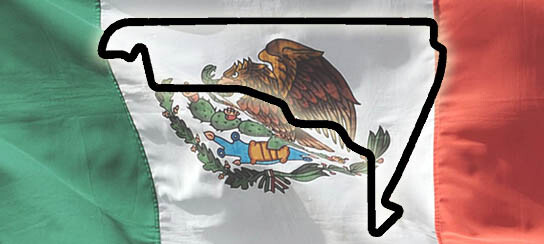BIOGRAPHY
In 2015 Formula One returned to the Autodromo Hermanos Rodríguez in Mexico City after a 23-year absence. The 4.305km (2.675-mile) circuit has been heavily revised since it last hosted a grand prix, in 1992, but it remains on its original site in the Magdalena Mixhuca Park and it retains its name, in memory of the Rodríguez brothers, Pedro and Ricardo.
The circuit was originally built in 1962 in a public park, and that is not the only similarity to Monza. There are some fast straights and rapid corners that are quite similar to those of the legendary Milan track.
The current circuit has been heavily revised, most noticeably the Peraltada - the final corner before the pit straight - where only half of the original profile has been retained, for safety reasons. The first half of the original banked 180-degree right-hander has now been replaced with a technical stadium section, similar to Hockenheim.
The layout consists of seven left-handers and 10 right-handers, but the 1.314km (0.816-mile) pit straight has perhaps the biggest influence on car set-up. To achieve a predicted top speed of 328km/h (204mph), the cars will need to maximise a delicate trade-off between aerodynamic downforce and drag, and complicating matters further is the altitude.
Situated at 2,200 metres (7,218 feet), the Autodromo is considerably higher than any other venue in F1. There is only 78 per cent of the oxygen available at sea level, which changes the performance characteristics of the car and the power unit. The turbo has to spin faster to compensate for the lack of oxygen entering the ICE (internal combustion engine) and the thinner air means the car generates less aerodynamic downforce at any given wing level.
Many of the faster sections of track have been altered since the last race. The Esses have been modified in the name of safety and the notorious final corner, Peraltada, is no longer included in its entirety. The banked 180-degree right-hander is now preceded by a stadium section, from which the cars emerge in second gear halfway around Peraltada.
Fast Facts - Provided by the FIA
2018 marked the 19th World Championship Mexican Grand Prix. The race has been part of the F1 calendar in three distinct phases: from 1963-1970; from 1986-1992, while this latest iteration of the race joined the schedule in 2015. All of the races have taken place at the circuit that began life as the Magdalena Mixhuca circuit and was later re-christened the Autodromo Hermanos Rodriguez.
Three drivers can claim multiple wins in Mexico, with Jim Clark, Alain Prost and Nigel Mansell all standing as the most successful drivers at this race. Clark won in 1963 and 1967, Prost in 1988 and 1990 and Mansell in 1987 and 1992.
The current layout has seen a different winner each year since the race's 2015 return. Nico Rosberg won the inaugural event on the new circuit in 2015, Lewis Hamilton was victorious in 2016 and Max Verstappen won last year's race.
If Lewis Hamilton manages to wrap up his fifth F1 World Championship title on Sunday it will be the fifth F1 crown sealed in Mexico City. Hamilton claimed his fourth championship here last year, when a ninth-place finish was enough to guarantee him the crown. Further back in time, John Surtees took his sole title in Mexico in 1964 with Ferrari, Brabham's Denny Hulme took his only title win here in 1967, while Graham Hill won his second F1 title here in 1968 with Lotus.
In winning the United States Grand Prix last weekend, Kimi Raikkonen now has the most wins of any Finnish driver in Formula One. Raikkonen's COTA victory was his 21st in F1, one more than Mika Hakkinen. Keke Rosberg is next on the list with five wins. Raikkonen's win came after a wait of 113 races, the longest in F1 history. The record was previously held by Riccardo Patrese who had to wait 99 races between his 1983 South African Grand Prix win and his victory at the 1990 San Marino Grand Prix.
Lotus, McLaren and Williams are tied as most successful constructor at the Mexican Grand Prix, with three wins each. Lotus' victories were scored in 1963 and 1967 with Clark and in 1968 with Graham Hill. McLaren won in 1969 with Denny Hulme, in 1988 with Alain Prost and in 1989 with Aytron Senna. Williams won twice with Nigel Mansell, in 1987 and 1992 and also in 1991 with Patrese.
As with victory, pole position at the latest version of the Autodromo Hermanos Rodriguez has been taken by a different driver at each of the three events held so far. Nico Rosberg won from pole in 2015, as did Hamilton in 2016. Sebastian Vettel began last year's race from pole but finished in fourth place.
Fastest lap on the current layout has also been taken by three different drivers. Rosberg ran fastest in the 2015 race, Daniel Ricciardo was fastest in 2016 and Vettel set the current record last year with a time of 1:18.785, set on lap 68 at an average speed of 196.666 km/h.
Max Verstappen has led more laps of the current configuration than any driver. The Dutchman led every lap of the 2017 race on his way to his third career win. The only other drivers to have led laps on this current layout are Nico Rosberg (68), Hamilton (62) and Vettel (12).
Five drivers on the current grid have been classified in the top three here: Hamilton, Ricciardo, Raikkonen, Verstappen and Valtteri Bottas. Hamilton and Bottas are the only men with multiple podium finishes, with two apiece.


